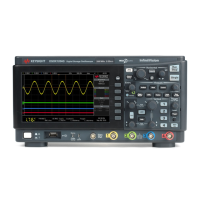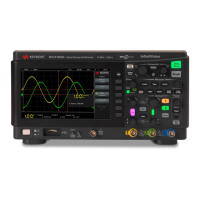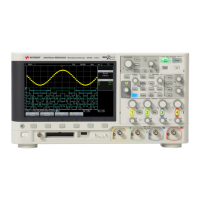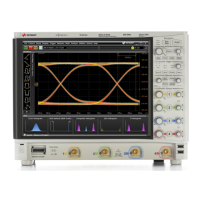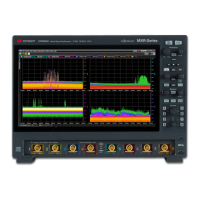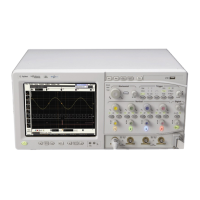358 Keysight InfiniiVision HD3-Series Oscilloscopes User's Guide
29 UART/RS232/422/485 Triggering and Protocol Decode
See Also • "UART/RS232/422/485 Triggering" on page 358
• "Interpreting UART/RS232/422/485 Decode" on page 360
• "Interpreting UART/RS232/422/485 Lister Data" on page 361
• "Searching for UART/RS232/422/485 Data in the Lister" on page 361
UART/RS232/422/485 Triggering
To trigger on a UART (Universal Asynchronous Receiver/Transmitter) signal,
connect the oscilloscope to the Rx and Tx lines and set up a trigger condition.
RS232 (Recommended Standard 232) is one example of a UART protocol.
To set up the oscilloscope to capture UART/RS232/422/485 signals, see
"UART/RS232/422/485 Protocol Decode Setup" on page 355.
After you have set up the oscilloscope to capture UART/RS232/422/485 signals,
you can then set up triggers.
1 Select the trigger badge, or from the main menu, choose Trigger > Setup....
2 In the Trigger dialog box, from the Trigger Type drop-down list, select Protocol 1:
UART/RS232 or Protocol 2: UART/RS232.
The Trigger dialog box controls unique to the PN: UART/RS232 trigger type are:
• Trigger — Selects the trigger condition:
• Rx Start Bit, Tx Start Bit — The oscilloscope triggers when a start bit occurs on
Rx, Tx.
• Rx Stop Bit, Tx Stop Bit — Triggers when a stop bit occurs on Rx, Tx. The trigger
will occur on the first stop bit. This is done automatically whether the device
under test uses 1, 1.5, or 2 stop bits. You do not need to specify the number
of stop bits used by the device Under test.
• Rx Data, Tx Data — Triggers on a data byte that you specify. For use when the
device under test data words are from 5 to 8 bits in length (no 9th (alert) bit).
• Rx 1:Data, Tx 1:Data — For use when the device under test data words are 9
bits in length including the alert bit (the 9th bit). Triggers only when the 9th
(alert) bit is 1. The specified data byte applies to the least significant 8 bits
(excludes the 9th (alert) bit).
